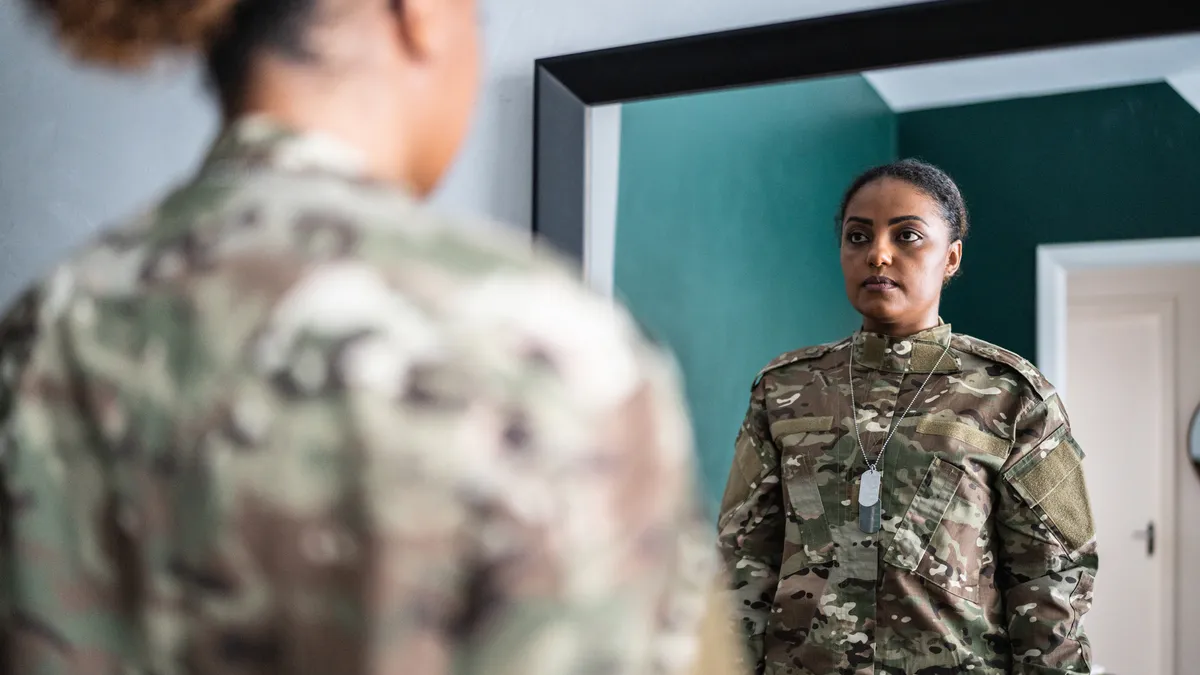Recruiting veterans is one accomplishment — but actually supporting them is another, Omari Faulkner told attendees Tuesday at the Society for Human Resource Management’s Talent conference.
The president and CEO of Blue Fire Fed, a strategic communications and development company, told the Orlando, Florida, audience that he’s seen many companies make moves to be “military-friendly.”
Sure, leaders “do a little Google search and they find a few other companies who are doing it well, and try to do the same thing,” he said. But each employer will have their own secret sauce, he continued.
“I wish I could stand up here and give you the secret sauce, but every organization is different,” Faulkner said candidly, citing the fact that companies of SHRM attendees were all different sizes, have different missions and bring different perspectives on talent acquisition.
“You really have to get in there, invest, dig deep into your data and understand who you are,” Faulkner said.
More than hiring, retaining vets should be HR’s concern
If employers say they want veterans in the workplace, but don’t have the infrastructure to support them, they’re offering empty promises, Faulkner said. Properly welcoming and supporting veterans in the workplace is critical for longevity, he emphasized. Faulkner and other labor experts, including Korn Ferry, say that almost half of veterans leave their jobs within the first year and about 80% leave within the second year. Military experts point to a relatability gap between ex-military workers and civilians.
In turn, Faulkner explained, “Sometimes, you can have a workforce that doesn’t really want to be recognized. They don't want to self-identify; they don't want people to treat them any differently than anyone else.” He confessed that he felt similarly right after graduating from Georgetown University, where he had played in the NCAA.
“I didn’t want people to know I played basketball. I didn’t want them to think I was a dumb jock or something that was a stereotype,” Faulkner said.
Regarding the stereotypes that plague people who have served and what kind of civilian co-worker they become, the SHRM speaker asked for compassion. When training talent acquisition teams and recruiters, he said, “do your best to get rid of those biases and what you may have heard about military members — that they’re going to come onto the job and act like they’re still sergeants, that all of them have PTSD.”
He recalled meeting a veteran who had served six tours in Iraq and Afghanistan. “He told me that he did suffer from PTSD, but it was because he lost his sister in a car accident when he was four years old,” he explained, also adding that it’s not uncommon for any individual, even a civilian, to have some form of PTSD show up in their life.
What resources does HR have to hire and retain veteran employees?
The talent conference moderator and Faulkner both recommended Hiring Our Heroes, a program run by the U.S. Chamber of Congress. The veteran hiring initiative seeks to place military personnel, veterans and their spouses in new roles through career events and civilian fellowship programs.
Faulkner also told SHRM-goers about the U.S. government’s Transition Assistance Program — established by the U.S. Department of Labor — which offers military-based career development digital courses. It’s worth noting DOL also offers a veteran talent resource guide and career transition resources, such as a Wounded Warrior and Caregiver Employment course.
Building a veteran talent pipeline “starts before that hire,” the SHRM speaker emphasized. It’s about defining both the culture of the company and ascertaining “how you’re going to slide that military culture in there.”













